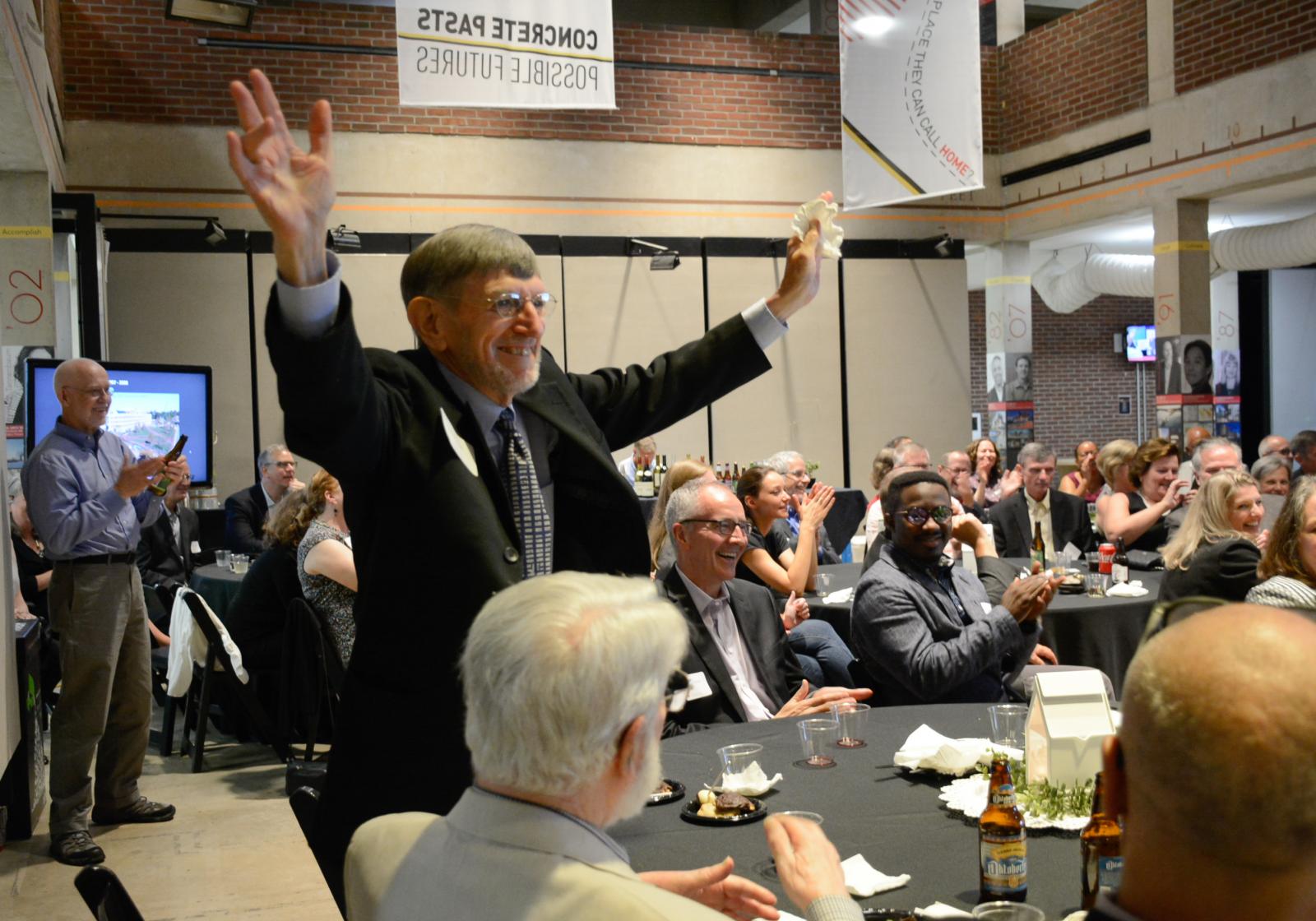After 29 years, the School of Architecture, Planning and Preservation is saying goodbye to Professor Steven W. Hurtt, who retired in August.
Hurtt joined the school as Dean of Architecture in 1990 after almost two decades teaching at Notre Dame, from 1973 to 1990. He had a personal connection to Maryland—as a D.C. native, he had visited the campus many times in his youth. Two uncles had attended UMD after World War II under the GI Bill. His wife and her sister were both alumnae. But what brought him to College Park was the chance for true connections.
“It was the opportunity to be connected at every level, from the freshman up to the president. That's really unique,” he said. “ A lot of faculty members don't have that experience. It was clear to me that a number of the faculty shared interests that I had. I sensed that it was a good fit.”
The school has grown rapidly in the nearly three decades of Hurtt’s Maryland tenure and he has been an instrumental part of that growth. He was active in the evolution of the school from one that was strictly architecture to the current four-discipline model that affords an interdisciplinary approach to the built environment.
“An architecture education is quite miraculous,” Hurtt said. “Students are extremely unprepared for it. Most education is focused on language and math. Architecture is a visual learning progress that requires them to make value judgments. It’s the character of the world we live in. If you grow up in any major city, if you have the experience of that environment, it’s clear that there’s a larger order to architecture than individual buildings.” He continued, “Architecture is so closely associated with the individual building that they don't think of architects being involved in things like neighborhood; it's an integration of pathways and spaces, it’s part of a larger pattern. I knew the individual student could benefit from the opportunity to take courses across the disciplines.”
In a tribute speech at a September retirement celebration for Hurtt, Interim Dean Donald W. Linebaugh credited Hurtt’s leadership as a guiding force in the evolution of the school and its curriculum.
“Steve had both the vision and the courage to act on opportunities and then leverage them in very strategic ways,” Linebaugh said. “As such, Steve was instrumental in taking us from a School of Architecture to the interdisciplinary powerhouse that we are proud to call Maryland’s Built Environment School.”
In his 14 years as dean, Hurtt served six provosts and worked alongside multiple campus vice presidents and leaders. “That kind of connectivity was a terrific thing,” he said.
He was instrumental in growth and changes to the campus itself, as well as the surrounding neighborhoods. From the beginning of his time at Maryland, Hurtt expressed his desire to be involved with campus planning, receiving not only the blessing of then-President William “Brit” Kirwan, but also the encouragement to expand his thinking beyond the campus to College Park. Hurtt reviewed the Facilities Master Plan alongside Professor Brian Kelly and became a go-to person of sorts for review of new buildings and spaces. Hurtt led the design competition for The Clarice Smith Performing Arts Center and other campus planning and construction projects including the Edward St. John Teaching and Learning Center, Mayer Mall, the South Campus Commons dorms, the Kim Engineering Building and more.
He was a guiding force in helping the school build a reputation for success in competitions, including the university’s first foray in the U.S. Department of Energy Solar Decathlon.
Throughout his tenure as dean and beyond, Hurtt has taken pleasure in supporting faculty development and advancement. In the 14 years that he served as dean, 13 people went up and were approved for tenure and three were awarded the Wilson H. Elkins Professorship, which recognizes a faculty member for a highly significant work of research, scholarship or artistic creativity completed in the recent past.
Hurtt has been instrumental in helping to expand and enhance the education abroad opportunities for students at the School of Architecture, Planning and Preservation (MAPP). He and his wife recently spearheaded the Steven and Carol Hurtt Education Abroad Fund, which helps graduate students with financial need participate in the school’s education abroad programs.
“Support to this fund helps MAPP prepare our future architects to develop and implement the best of urban and architectural ideas in an ever-growing landscape of global issues related to the built environment,” Linebaugh said in his speech honoring Hurtt.
“I believe in the importance of a relationship between our history and our present,” Hurtt said. “The ability to study architecture up close—mainly by drawing it, taking the time to look at it—carefully provides the strongest fundamental basis you can possibly have developing critical judgment and a body of reference. The immersion in a situation, where there is so much architecture of such high quality in a city that developed over time, is a very grounding experience. You see all the stuff that not only reinforces what you thought you knew, but also contradicts what you thought you knew.”
Next on the docket, Hurtt said, is coediting a book focused on the urban design legacy of architectural historian Colin Rowe.
He cites his writing goals—“a backlog of writing”—as one of the reasons he is stepping away from the campus.
“I thank everybody,” Hurtt said. “It's been an extremely rewarding experience. I loved it. I will miss the engagement with the students.


